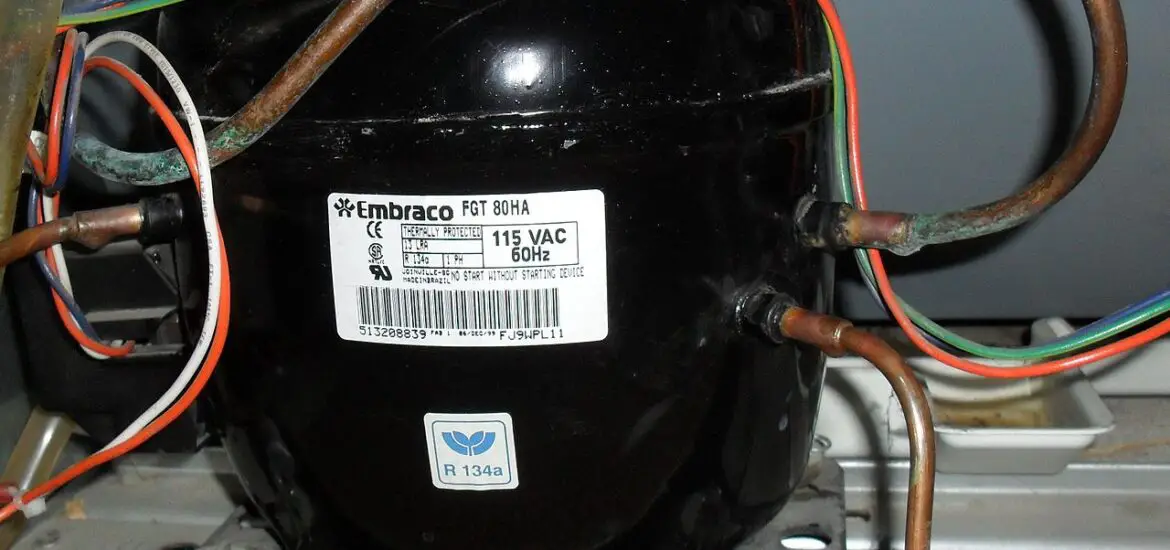Ever peeked behind your fridge and wondered about those pipes? They’re called refrigerator compressor lines, or fridge compressor lines if you fancy. These parts might seem boring, but trust us, they’re far from it. So, are you ready to learn all about them? Hang tight, because we’re about to embark on a journey through the hidden world behind your refrigerator’s cooling magic.

Table of Contents
Understanding the Role of Refrigerator Compressor Lines
Think of refrigerator compressor lines as the circulatory system of your fridge. Just like how our heart pumps blood through our veins and arteries, the compressor in a refrigerator uses these lines to circulate refrigerant, the lifeblood of your fridge.
Purpose of the Compressor in a Refrigerator
So, what’s this compressor up to anyway? In layman’s terms, the compressor is the ‘heart’ of the refrigerator. It’s what makes the cold happen. By compressing the refrigerant gas, it ups the pressure and temperature, readying it for its cooling mission.
Significance of Compressor Lines
Compressor lines, then, are the ‘veins and arteries’ that deliver this hot, pressurized refrigerant where it needs to go. They make sure the refrigerant reaches the condenser and evaporator coils – the key stages in the cooling process.
Anatomy of Refrigerator Compressor Lines
If you’ve ever had a gander at the back of your fridge, you’ll know it’s not just one hose back there. Instead, there are two main types of lines attached to your compressor: the suction line and the discharge line.
Structure of Compressor Lines
Despite their fancy names, these lines are pretty much just copper tubes. Copper’s great for this kind of job because it’s a fantastic conductor of heat. And that’s pretty important when you’re dealing with hot refrigerant.
Suction Line
The suction line is the bigger of the two tubes. It’s the return journey for the refrigerant. Once it’s done its cooling job, the refrigerant turns back into a gas and heads back to the compressor through this line.
Discharge Line
Meanwhile, the discharge line is the one that carries the high-pressure, high-temperature refrigerant from the compressor to the condenser coil. It’s smaller in diameter than the suction line, but just as important.
Working Principle of Compressor Lines
So, how does it all come together? Picture it like a relay race. The compressor pressurizes the refrigerant and passes the baton to the discharge line. The discharge line then whisks it away to the condenser coil, where it gives up its heat and turns into a liquid. The liquid refrigerant then cools your fridge before returning to the compressor via the suction line, ready for the next lap.
Check out these other related articles…
Refrigerator 10-Year Compressor Warranty: Ultimate Guide
Fridge Compressor Overload Keeps Tripping: Reasons & Fixes
Refrigerator Compressor Valve: Your Handy Guide
Replacing a Fridge Compressor: Your Detailed Guide
Fridge Compressor Shaking: Why It Happens and How to Fix It
Common Issues with Refrigerator Compressor Lines
Like everything else in life, refrigerator compressor lines aren’t immune to problems. The good news is, most issues give warning signs before they become real trouble. Knowing what to look out for is half the battle.
Symptoms of Compressor Line Problems
You know how you feel sluggish when you’re coming down with a cold? Your fridge isn’t much different. If the compressor lines have an issue, your fridge might not cool properly, or it might run constantly or not at all. It might also make strange noises, or you might see water pooling underneath it.
Common Problems and their Causes
Several things can go wrong with your compressor lines. There could be a refrigerant leak, or the lines could be blocked. Or, the compressor itself might be failing. The trouble is, these problems can be a bit tricky to diagnose and fix, especially if you’re not familiar with fridge innards.
Maintaining and Troubleshooting Refrigerator Compressor Lines
Don’t worry, though. There are still some things you can do to keep your fridge running smoothly and prevent problems with the compressor lines.
Routine Maintenance of Compressor Lines
The best thing you can do? Keep the coils and lines clean. Dust and grime can interfere with heat transfer and cause your fridge to work harder than it needs to. Regularly cleaning the back of your fridge can really help it run more efficiently.
Troubleshooting Compressor Line Problems
If you suspect a problem, you can check the lines for any obvious issues like kinks or leaks. But be careful – messing with the compressor lines can be dangerous if you don’t know what you’re doing.
When to Seek Professional Help
Sometimes, it’s best to call in the pros. As handy as you might be, there are some things that should be left to the experts.
Limitations of DIY Troubleshooting
Fixing compressor lines isn’t like fixing a leaky tap. It involves dealing with refrigerants, which can be harmful if mishandled. Not to mention, the compressor itself is a complex component that requires specialized knowledge and tools to repair.
Indications for Professional Intervention
If your fridge isn’t cooling, is making weird noises, or if you’ve found a leak or blockage that you can’t fix yourself, it’s time to call a professional. Don’t risk making the problem worse (or injuring yourself!) by trying to fix it on your own.